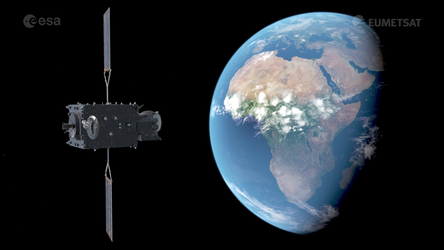Accept all cookies Accept only essential cookies See our Cookie Notice

About ESA
The European Space Agency (ESA) is Europe’s gateway to space. Its mission is to shape the development of Europe’s space capability and ensure that investment in space continues to deliver benefits to the citizens of Europe and the world.
Highlights
ESA - United space in Europe
This is ESA ESA facts Member States & Cooperating States Funding Director General Top management For Member State Delegations European vision European Space Policy ESA & EU Space Councils Responsibility & Sustainability Annual Report Calendar of meetings Corporate newsEstablishments & sites
ESA Headquarters ESA ESTEC ESA ESOC ESA ESRIN ESA EAC ESA ESAC Europe's Spaceport ESA ESEC ESA ECSAT Brussels Office Washington OfficeWorking with ESA
Business with ESA ESA Commercialisation Gateway Law at ESA Careers Cyber resilience at ESA IT at ESA Newsroom Partnerships Merchandising Licence Education Open Space Innovation Platform Integrity and Reporting Administrative Tribunal Health and SafetyMore about ESA
History ESA Historical Archives Exhibitions Publications Art & Culture ESA Merchandise Kids Diversity ESA Brand CentreLatest
Space in Member States
Find out more about space activities in our 23 Member States, and understand how ESA works together with their national agencies, institutions and organisations.
Science & Exploration
Exploring our Solar System and unlocking the secrets of the Universe
Go to topicAstronauts
Missions
Juice Euclid Webb Solar Orbiter BepiColombo Gaia ExoMars Cheops Exoplanet missions More missionsActivities
International Space Station Orion service module Gateway Concordia Caves & Pangaea BenefitsLatest
Space Safety
Protecting life and infrastructure on Earth and in orbit
Go to topicAsteroids
Asteroids and Planetary Defence Asteroid danger explained Flyeye telescope: asteroid detection Hera mission: asteroid deflection Near-Earth Object Coordination CentreSpace junk
About space debris Space debris by the numbers Space Environment Report In space refuelling, refurbishing and removingSafety from space
Clean Space ecodesign Zero Debris Technologies Space for Earth Supporting Sustainable DevelopmentLatest
Applications
Using space to benefit citizens and meet future challenges on Earth
Go to topicObserving the Earth
Observing the Earth Future EO Copernicus Meteorology Space for our climate Satellite missionsCommercialisation
ESA Commercialisation Gateway Open Space Innovation Platform Business Incubation ESA Space SolutionsLatest
Enabling & Support
Making space accessible and developing the technologies for the future
Go to topicBuilding missions
Space Engineering and Technology Test centre Laboratories Concurrent Design Facility Preparing for the future Shaping the Future Discovery and Preparation Advanced Concepts TeamSpace transportation
Space Transportation Ariane Vega Space Rider Future space transportation Boost! Europe's Spaceport Launches from Europe's Spaceport from 2012Latest
MTG-Imager
Thank you for liking
You have already liked this page, you can only like it once!
Building on the long-standing partnership between ESA and Eumetsat, and the success of both the first generation of Meteosat missions and the subsequent Meteosat Second Generation (MSG) series, Meteosat Third Generation (MTG) is set to take over the reins of providing weather data from geostationary orbit. This third generation of weather satellites not only guarantees the continuity of data for weather forecasting from geostationary orbit for the next two decades, but also offers significant enhancement of the current capabilities.
The MTG mission comprises two types of satellite: four MTG-Imagers and two MTG-Sounders. The animation here shows a technical view of the MTG-Imager satellite.
The MTG-Imager satellites carry the Flexible Combined Imager instrument which is natural successor of the Spinning Enhanced Visible and Infrared Imager (SEVRI) carried on the current Meteosat Second Generation satellites. Where SEVRI has 12 spectral channels, the Flexible Combined Imager has 16 channels. It operates at wavelengths between 0.3 and 13.3 microns, and has a spatial resolution of 1–2 km delivering a full image of Earth every 10 minutes. In addition it can operate in a ‘high spatial resolution fast imagery’ mode, which can ‘zoom in’ on smaller areas of the Earth disc with four spectral channels, but with increased spatial resolution (to 0.5 km) and delivering data images of selected regions every 2.5 minutes.
The MTG-Imager satellites also carry the Lightning Imager which provides continuous monitoring of more than 80% of the Earth disc for detecting lightning discharges taking place either between clouds or from cloud and ground.
-
CREDIT
ESA/mlabspace -
LICENCE
ESA Standard Licence
-
Documentary
-
-
-

MTG-Sounder satellite over the equator

Forecasting the weather from geostationary orbit

Meteosat Third Generation Sounder up close

MTG-I in geostationary orbit















 Germany
Germany
 Austria
Austria
 Belgium
Belgium
 Denmark
Denmark
 Spain
Spain
 Estonia
Estonia
 Finland
Finland
 France
France
 Greece
Greece
 Hungary
Hungary
 Ireland
Ireland
 Italy
Italy
 Luxembourg
Luxembourg
 Norway
Norway
 The Netherlands
The Netherlands
 Poland
Poland
 Portugal
Portugal
 Czechia
Czechia
 Romania
Romania
 United Kingdom
United Kingdom
 Slovenia
Slovenia
 Sweden
Sweden
 Switzerland
Switzerland























